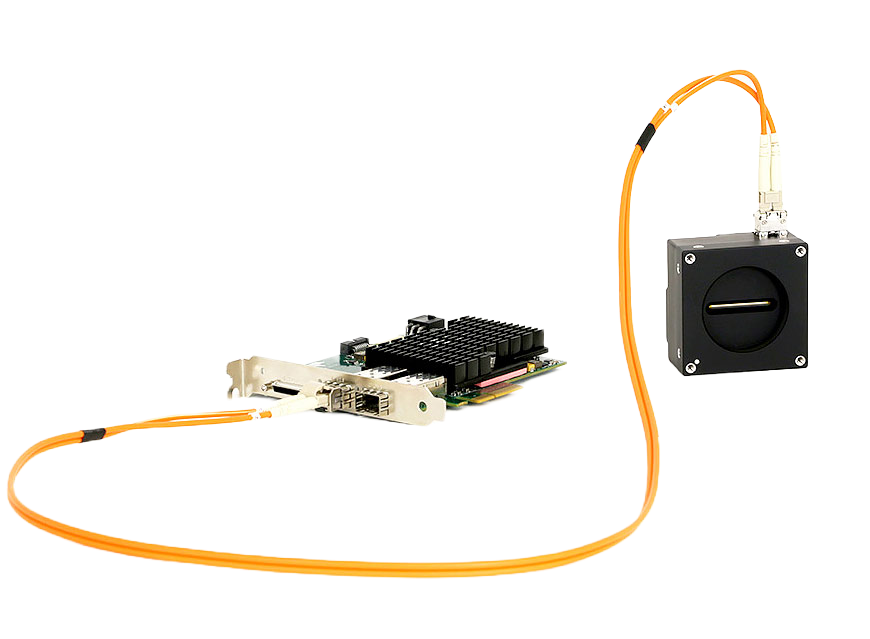Primer: Camera Link HS
CLHS is a G3 standard (JIIA, EMVA and AIA) machine vision interface for communication between high-bandwidth imaging components including cameras and frame grabbers. Through the AIA, a CLHS committee with 5 active members of multiple leading edge companies guide the continued development and deployment of the new standard. Updates on the ratification process and details on development requirements can be found on the AIA's website.
Increasing resolution and faster frame rates have caused cameras for machine vision systems to steadily grow in their need for bandwidth. Camera Link HS is the next generation interface standard that addresses the needs of all machine vision applications. It is designed from a system point of view, ensuring the ability to create low cost cameras and frame grabbers, while fulfilling the ease of use, flexibility and data reliability demanded by customers.
Key Features
- Scalable Bandwidths from 300 to 16,000 MB/s
- Extremely Reliable Data Delivery: immune to single bit transmission errors
- Copper or Fiber Optic Cables from 15 to 300+ meters in length
- Multi-Vendor Compliant Components Available
- Shared IP core for quick, low-risk, low-cost developments
| Interface Technology | CLHS | Coaxpress | USB 3.1 |
| Main Options |
|
|
|
| Advantages |
|
|
|
| Disadvantages |
|
|
|
Camera Link HS is designed to be a reliable closed loop system able to migrate with advances in telecommunication technology. This ensures a long service life for Camera Link HS and products based on it.
Additional CLHS Features
- Physical layer can be implemented inside FPGA.
- Multi-sourced components adopted from high-volume industries ensure low-cost and long service life.
- Immune to single bit transmission errors.
- Bidirectional triggering - low jitter of 3.2ns, 6.4ns possible with IP core - makes Camera Link HS viable for linescan applications.
- M protocol video protected by CRC and low latency resend enabling the resend buffer to be implemented in the camera FPGA for low cost, small size and reduced power.
- X protocol uses advanced forward error correction technology capable of eliminating need for resend buffer.
- The protocol features enable parallel image processing.
- Video packetization enables regions of interest to be transferred easily and precisely.
- 300MB/s to 1200MB/s uplink allows quick camera reconfiguration such as updated coefficient sets.
- 16 bidirectional GPIO with latencies of 100 to 300ns (16 more reserved).
- Frame by frame control of camera supported by the trigger message and acquisition byte returned in video header forming a closed loop system.
- Cameras use GenICam™ application programming interface for ease-of-use.
- Frame grabber to camera communications are GenCP for easy software
- integration.
Cabling Options
- Standardized LED for quick system troubleshooting
- Eight (8) cables maximum
- 300 MB/s F1 fiber optic with 300+ meter distance (SFP connector)
- 1200 MB/s F2 fiber optic with 300+ meter distance (SFP+ connector)
- 2100/3300 MB/s C2 copper cable with 15/5 meter distance (CX4 connector)
- 8400 MB/s C3 copper with 2 meter distance / 100 meter with active optical connectors (AOC)

Fiber optic cabling is high bandwidth, light weight, small in size and long distance capable. And thanks to the expansion of fiber in local area networking, it is also low cost, robust (extreme flex rated) and immune to electrical noise. Fiber cabling infrastructures will allow retrofitting camera and frame grabber upgrades to higher bit rates in future.
